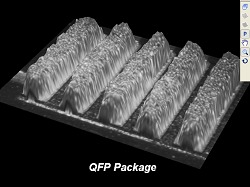3D solder paste inspection, also called SPI is a technique for testing printed circuit boards to make sure that they are printed correctly. You use a machine to monitor the solder paste alignment and volume during the printing process. It is important that the volume of solder is accurate because circuit board failures are usually a result of too much or too little solder paste. Using this machine can lead to the higher quality manufacture of printed circuit boards, which is critical to long-term success.
How Does Solder Paste Inspection Work?
A 3D solder paste inspection is a method of visually monitoring printed circuit boards for defects in the solder paste. This method uses 3D imaging to detect issues such as scratches, stains, and nodules. It also measures volume, area, height, shape, shift, bridge, and overflow. There are specific measurements that will accompany any printed circuit board that is made correctly, so this method will know if anything is off.
It uses 3D imaging to scan the surface area, and the scanned image is compared to the specified measurements for the specific board. This method is very accurate for detecting defects, which is important because any defect can lead to the board not working or failing early.
Features of 3D Solder Paste Inspection Equipment
First of all, it is important to have up-to-date software. When the software is more current, it will be more accurate. Having the volume or area of the solder paste off by even a tiny amount reduces the functionality of the printed circuit board, so it is important to have the most accurate software.
The speed and cycle time of the machine is also important. The machine needs to be able to keep up with the largest circuit board being processed so that it is accurate. In addition, the sensor and lighting technology needs to be excellent as well. If the machine has better lighting, it will be more accurate. If there is only a single projector, it will have shadows and be less reliable. Having more projectors will lead to greater accuracy, which will improve your results.
It is important that the machine be easy to read and understand. The purpose is to find defects before the circuit board is mass printed. Defects lead to circuit boards that underperform or don’t last. This inspection can measure the exact amount of solder paste to ensure that it is correct.
The Solder Paste Inspection Helps to Reduce Errors
Not only can a 3D solder paste inspection tell you whether too much or too little solder paste has been used on a printed circuit board, but it can also detect other errors. This leads to overall efficiency of production. When manufacturers are able to understand the causes of defects to the PCBs, they will be able to make changes to their processes early on to correct it. The end result is higher efficiency and PCBs that are functional.
Manufacturers have a goal of producing high-quality PCBs as efficiently as possible with low waste, and the solder paste inspection makes this possible. By ensuring that the correct amount of solder paste is used, manufacturers know that the PCB is functional. If it isn’t, they know that there is another problem that can be corrected. This makes the entire process more efficient because they will find and correct errors early on in the manufacturing process.
When manufacturers produce PCBs that are not inspected, they end up with problems. A 3D solder paste inspection ensures that PCBs are made correctly by detecting the solder paste.
